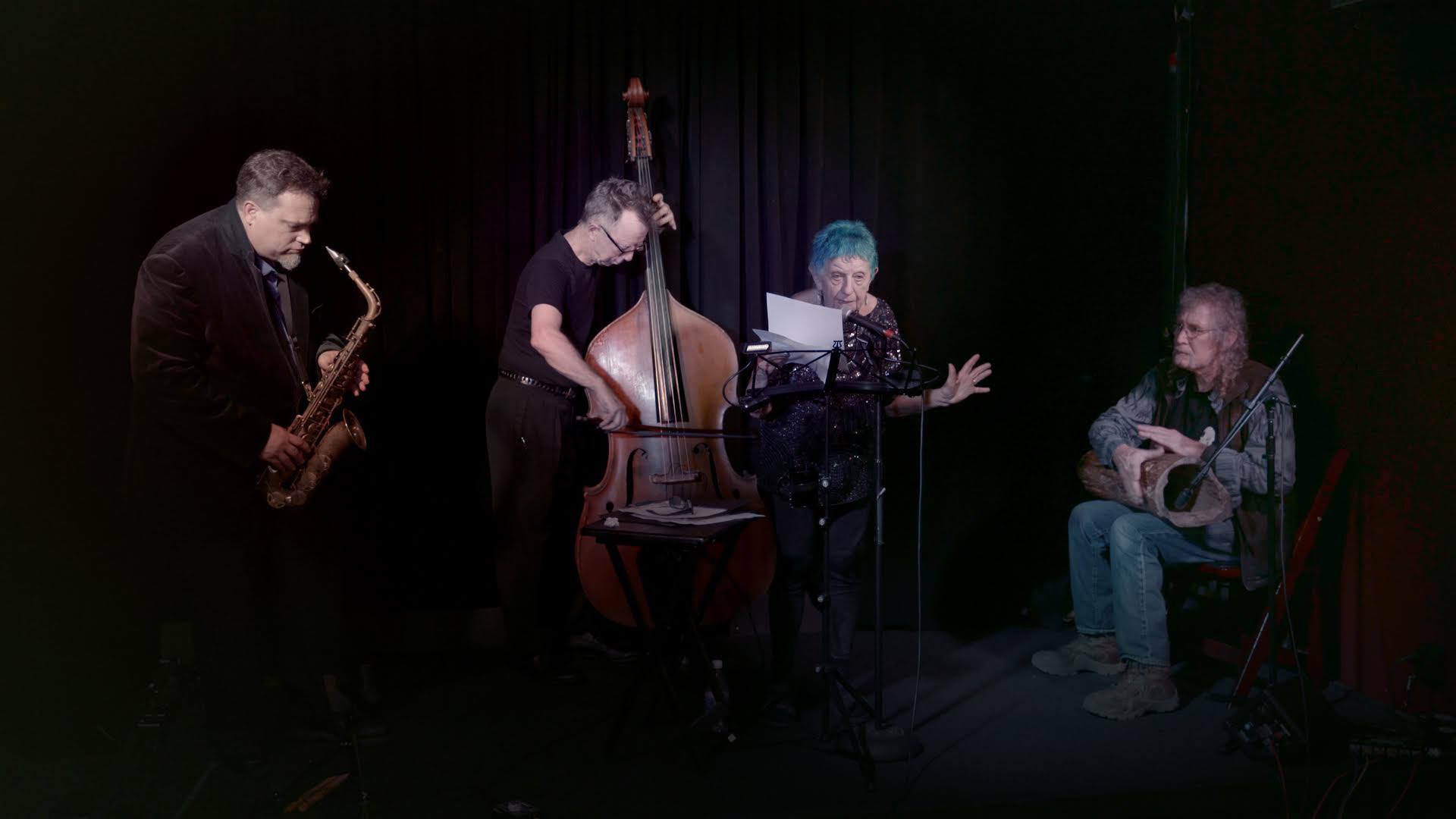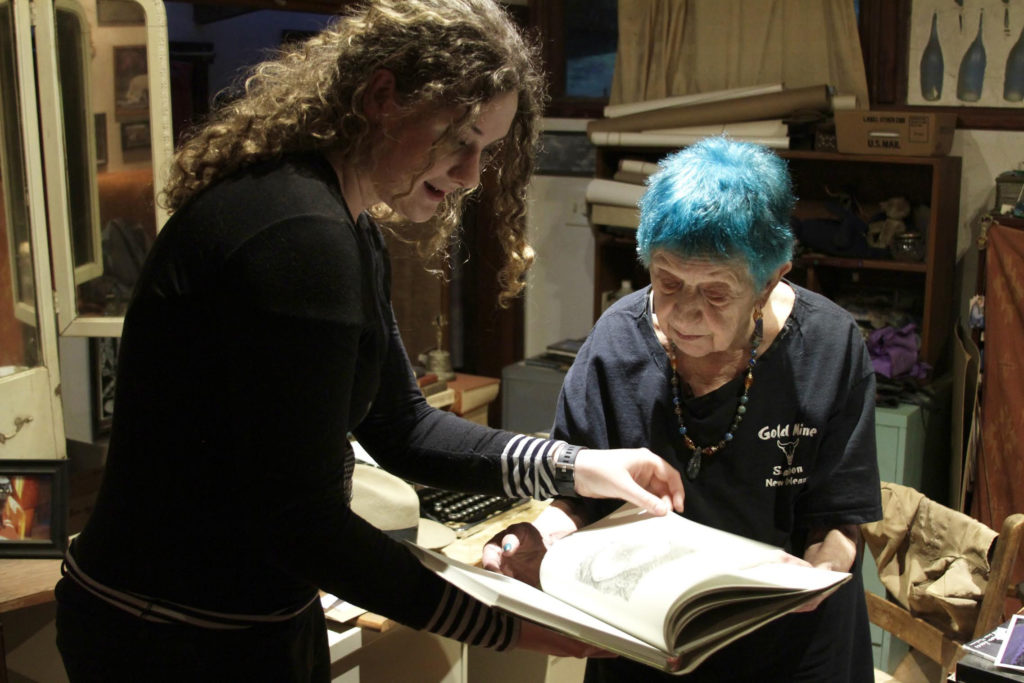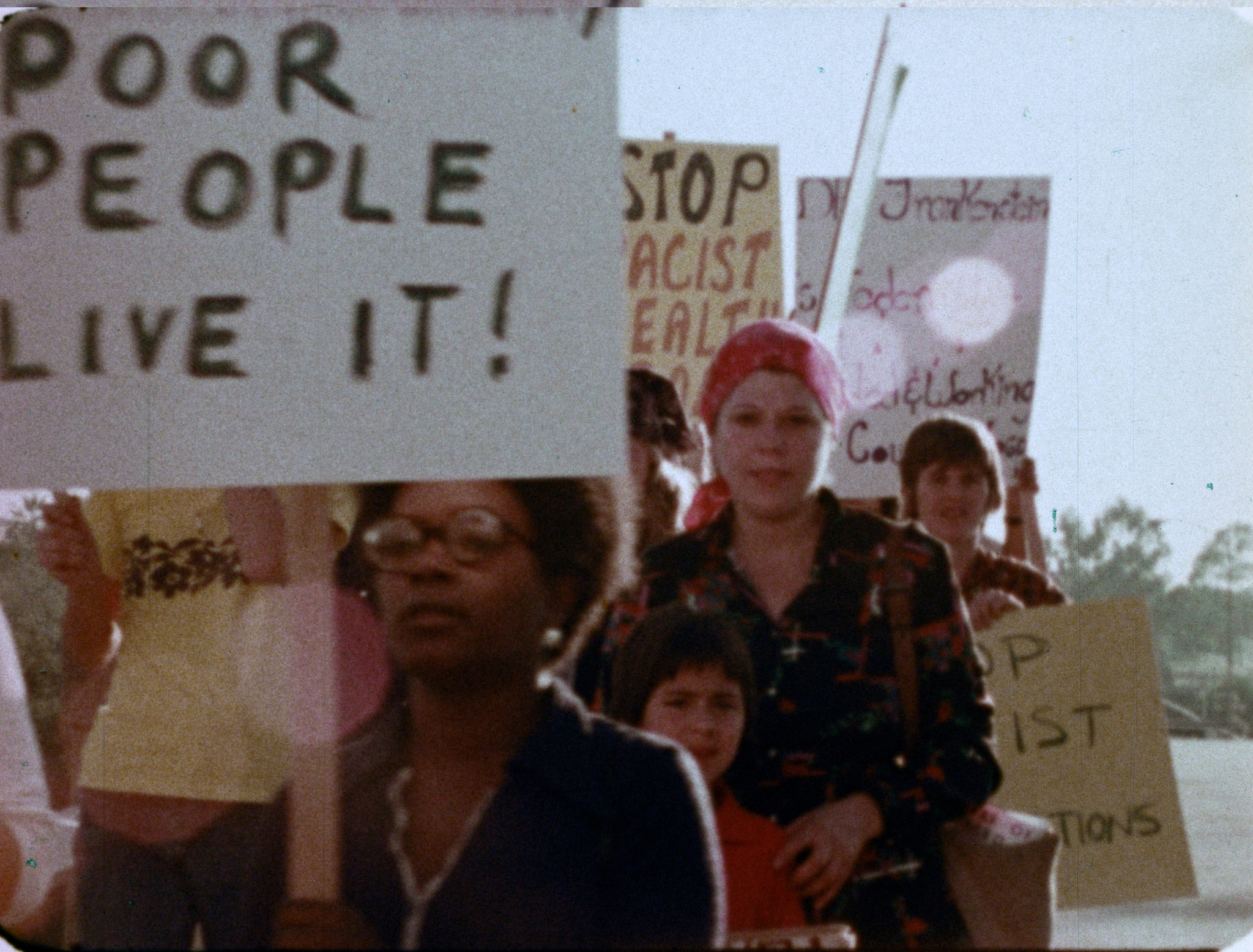Melody C. Miller illuminates revolutionary poet ruth weiss with documentary

Rent Roms, Doug O’Conner, ruth weiss and Hal Davis (left to right) perform in Berkeley. weiss brought live performances across the country after first uniting with a band in Chicago, Miller said. (Courtesy of Melody Miller)
By Harbaksh Kaur
July 23, 2023 11:43 a.m.
This post was updated July 30 at 5:00 p.m.
Melody C. Miller is giving life to the untold story of a revolutionary woman.
The alumnus is the producer, director of cinematography and co-editor of “ruth weiss, the beat goddess,” which recently won the San Fransisco/Northern California Regional Emmy for feature documentary. Miller said she was introduced to ruth weiss, a poet of the Beat Generation, when a friend took her to see weiss’ poetry show in San Francisco. She was drawn in by weiss, with her bright teal hair and raspy voice, and was eager to know who she was, Miller said.
“The moment her voice started to speak words, it gave me chills,” Miller said. “She had this deep, husky Austrian voice, and she began to tell her story through poetry.”
[Related: Film & Television Archive to screen alumni’s documentary on incarcerated women]
Following her first exposure to weiss, Miller began her three-year-long journey of creating the documentary about the poet, she said. weiss faced a lot of rejection in the 1950s, Miller said, and publishers would not print her work as it was not standard practice to publish women authors. Miller said she was encouraged to share weiss’ influence within beat culture, which consisted of anti-capitalist and nonconforming writers, as men earned more credit for their impact in it. weiss loved dance, art, music and film, allowing Miller to explore multiple creative avenues in the documentary, she said.
Miller said she incorporated dance throughout the documentary by including shots of a ballerina dancing in the Mojave Desert to accompany weiss’s book “Desert Journal,” in which she wrote a daily poem in the desert for 40 days. Another dance sequence with a little girl dressed to resemble a forest goddess was recorded in the Redwood Forest, as weiss loved forests and nature, Miller said. This number is accompanied by a poem called “the children yes,” Miller said, and follows weiss’ story of her hikes in the forests of Austria while capturing her love for the woodland.
Music was also vital for the film as a way to incorporate weiss’ musical influence, Miller said. Alumnus Stephen Spies, the composer for the film, said string instruments and piano were primarily used to form a simple composition opposite the jazz music of weiss’ band. Upholding the music that the band played was important to effectively share her story, he said. Thus, the music outside of the band was employed purely for support, he said, and he aimed to sustain the emotion of the scene to accurately showcase weiss’ noteworthy story.

“The life that this woman lived, it’s remarkable,” Spies said. “It’s a story that needs to be told. It’s a life that needs to be celebrated.”
weiss was also a survivor of the Holocaust and was able to find refuge in the United States after fleeing Nazi Germany, Miller said. Therefore, she said she wanted a medium that suited the heavy themes of weiss’ experience and decided animation would befit the story the best. Miller added that the animation enhanced the story for viewers, as it helped them understand what it was like to escape. Ketzi Rivera, the animator and artist for the film, said the animation was styled after impressionist paintings from artists such as Claude Monet. The animation added to the mood of the film and fit in with the documentary’s rhythm while enhancing weiss’ journey of leaving her home and finding safety, she said.
[Related: Alumnus’ animated film foregrounds enduring importance of friendship, compassion]
To further explain weiss’ legacy, Miller said she searched to find articles showing weiss performing throughout the ’40s and ’50s. Her rise to prominence came during the late 1940s while she was living in Chicago, Miller said, and a musician discovered weiss writing in the basement and brought her upstairs to perform her poetry. She said a band then began to accompany her, and weiss eventually brought their performances to New Orleans and San Francisco. Putting together every component of this story within the documentary in a seamless manner was important to help viewers visualize weiss’ experience, Miller said.
“It’s all about how the film flows in your heart and in your mind,” Miller said. “When you’re editing, there’s a part that flows, but it’s not quite there yet, and you have to find that missing piece. … It’s almost like this film was a poem I wrote for her.”
The documentary was released in 2019 and premiered at the Asolo Art Film Festival in Italy, Miller said. weiss performed at the Cinequest Film & Creativity Festival where she won the Maverick Spirit Award in 2020, which was also won by stars such as Harrison Ford and Werner Herzog. Following weiss’ death, Miller said she was proud the film could give weiss the recognition she deserved and properly honor her life.
“It (the documentary) was a good thing and made me very proud that we made this film and her story got to be heard,” Miller said. “She got the recognition that she deserved before she passed away,”



